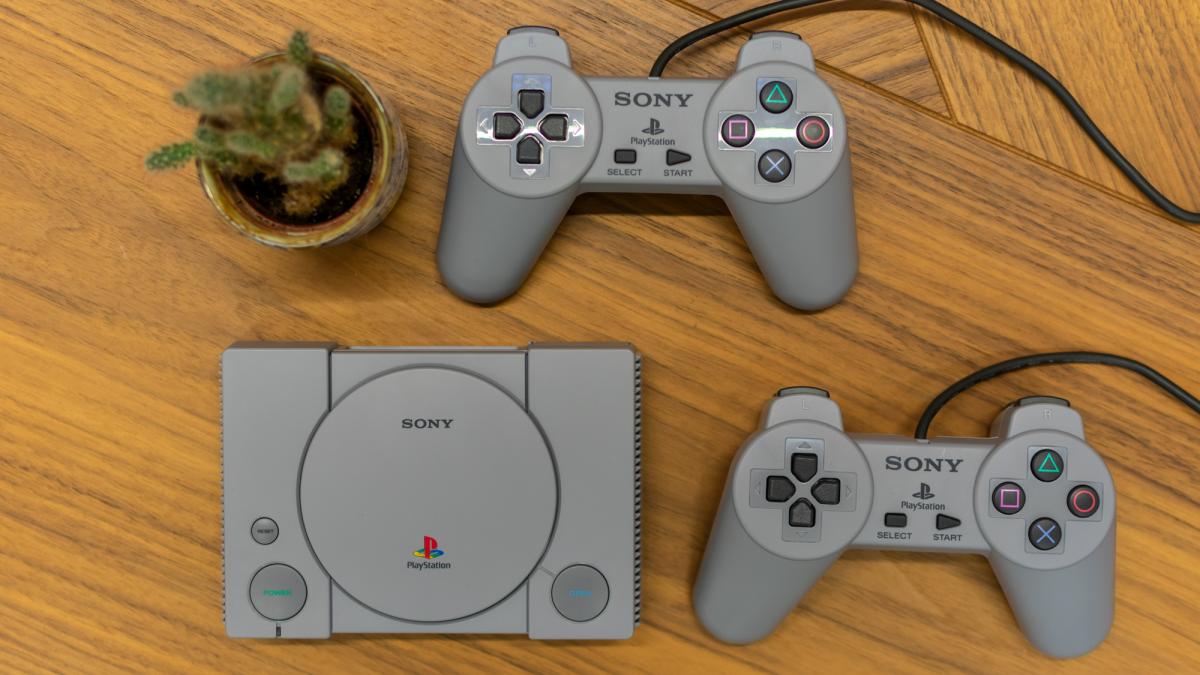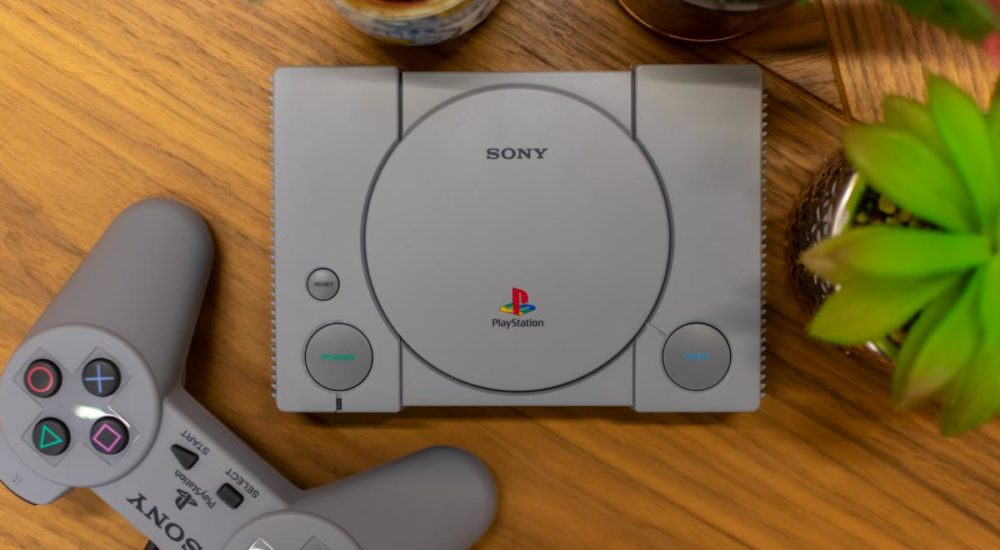The original PlayStation has returned, but it’s a high price to pay for a cobbled-together nostalgia hit
Pros
- Nostalgic, compact design
- Two bundled controllers
Cons
- Disappointing selection of 20 preinstalled games
- PAL performance woes
- Pricey sentimentality
Hot on the heels of Nintendo’s recent successes with its re-launched reimaginings of our favourite childhood games consoles, Sony has released the PlayStation Classic. A miniaturised version of Sony’s original gaming machine, the PlayStation Classic offers a heavy dose of nostalgia, but the price of admission is much higher than I would have hoped – and never really justified.
PlayStation Classic review: What you need to know
With the original PlayStation revered as one of the best games consoles ever made, the PS Classic hopes to capitalise on past successes. Inside its small, grey plastic chassis you’ll find a list of 20 preinstalled games, including much-loved titles such as Grand Theft Auto, Tekken 3 and Final Fantasy VII. You can’t install any extra games if you don’t like the lineup, though, or at least not through official methods.
The console itself comes bundled with two retro PlayStation controllers, along with an HDMI cable and micro-USB power lead. As with Nintendo’s diddy nostalgia hits, you’ll have to supply your own USB power adapter to get the console running.
PlayStation Classic review: Price and competition
You’ll have to fork out £90 for a PlayStation Classic if you fancy one for Christmas. Out of reach of most gamers’ stocking filler budgets, that’s a heck of a lot of money for what is, essentially, a Raspberry Pi running a small list of emulators in a plastic chassis.

If you’re hoping to revisit your childhood, and aren’t entirely impressed with Sony’s lineup of games, you might be interested in Nintendo’s re-released consoles. Both the SNES Mini and NES Mini offer 30 preinstalled games and cost £70 and £50 respectively.
If you already own a PS4, however, an entire back catalogue of original PlayStation titles are already at your fingertips, including Crash Bandicoot, Tomb Raider, Spyro, WipEout and Kula World from as little as £4 each. Of course, there’s also the option of grabbing a Raspberry Pi Model 3 B+ for around £34 and installing as many free game emulators as you wish.
PlayStation Classic review: Design and features
The PlayStation Classic is unashamedly adorable. Aside from being 45% smaller – and weighing next to nothing – it looks practically identical to your old first-generation PlayStation that used to sit under your CRT television.

Aside from its size, there are a few notable differences between the two. Most importantly is the addition of a full-sized HDMI port on the console’s rear, which is used to output footage at 720p resolution. This sits next to the solitary micro-USB port. Another noteworthy change is the addition of a pair of full-fat USB Type-A ports on the front of the console, which are used to connect the PlayStation Classic’s bundled controllers.
Much to my great disappointment, the large circular disc flap on the top of the console is firmly sealed shut and can’t be opened. The four felt-coated feet on the PlayStation Classic’s underbelly shouldn’t scuff your TV cabinet, though.
As for the PlayStation Classic’s physical buttons, the circular power button is precisely where it should be, while the small reset button is used to quit the game you’re currently playing. The open button doesn’t open the disc tray, but rather is used to swap out the virtual “discs”, for games that originally launched on multiple discs, such as Metal Gear Solid and Final Fantasy VII.
PlayStation Classic review: Games and software
So, what games do you get for your £90? Well, I’ve included a full list of preinstalled titles in a table below, but it’s safe to say that the lineup is rather limited. Big-hitters such as Crash Bandicoot, Tomb Raider and PaRappa the Rapper are noticeably absent, and instead, we’re treated to a handful of lesser-known titles such as Intelligent Qube and Super Puzzle Fighter II Turbo.
I expect this is largely to do with the complicated matter of licencing agreements, especially since both Crash Bandicoot and Spyro have recently been remastered with updated graphics, higher frame rates and increased resolutions.
Still, it’s nice to see a few familiar faces such as Rayman, Resident Evil and the original Grand Theft Auto make the cut, and I was especially pleased to see joyous 3D platformer Jumping Flash! make its first appearance in well over two decades.

Back to the console itself, though, which plays the familiar mid-nineties PlayStation boot-up tune whenever it’s powered on. You’re then presented with a radial menu of all 20 games, each with their own memory card menus and resume points. This feature allows you to pick up where you left off, provided you pressed the reset button before ending your gaming session.
And, while you could adjust the aspect ratio and apply retro filters to individual games in Nintendo’s NES and SNES consoles, the PlayStation Classic’s settings menu is much more limited. Here, you can only change the console’s language, apply power savings settings and add a screensaver.
If you’re interested in the technical specifications, the PlayStation Classic is powered by a quad-core MediaTek MT8167A processor that is clocked at 1.5GHz and works with the embedded PowerVR GE8300 GPU. 1GB of DDR3 RAM is used for multitasking, along with 16GB of eMMC storage.

Now that I’ve bombarded you with those numbers, I can tell you that navigating the PlayStation Classic’s UI is slick enough, but actual performance varies wildly from game to game. The quality of the emulations could be better, and some simply aren’t as well optimised as they should be for the updated hardware.
Most baffling of all, however, is the inclusion of PAL versions of games. The issue here is that, while the console itself runs at a refresh rate of 60Hz, six of the 20 games are restricted to 50Hz – as was the European standard with TV’s back in the nineties. What this means is that, instead of a silky smooth 60Hz experience as you’d get with NTSC versions of these titles, the experience is slowed down and inputs can feel sluggish and unresponsive.
Sadly, this is most noticeable with the mighty Tekken 3. In an arcade fighter with split-second decision making, the slowed-down experience can be the difference between winning that crucial victory and an excruciating KO. Of course, if you grew up in the UK as I did, you might fondly remember the inferior experience and not see the problem, but it’s a real shame that Sony didn’t include the best versions of these games that they could.
PlayStation Classic review: Verdict
With its mixed lineup, limited features and hobbled, 50Hz games, the PlayStation Classic feels more like a cobbled-together, half-baked cash grab than an essential purchase for the nostalgic gamer. Its dinky design and excellent pair of bundled controllers might be worth the price of admission for some, but its games lineup, lack of expanding library options and performance woes hold it back from greatness.
Source: expertreviews.co.uk




































